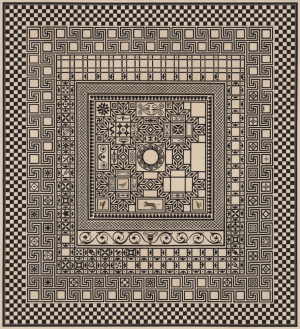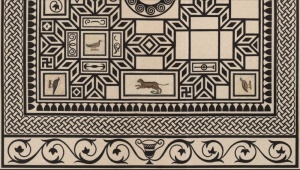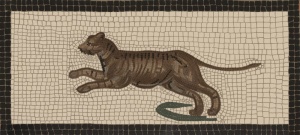Dionysus, Glory to Life - Mosaic with a Game of Meanings
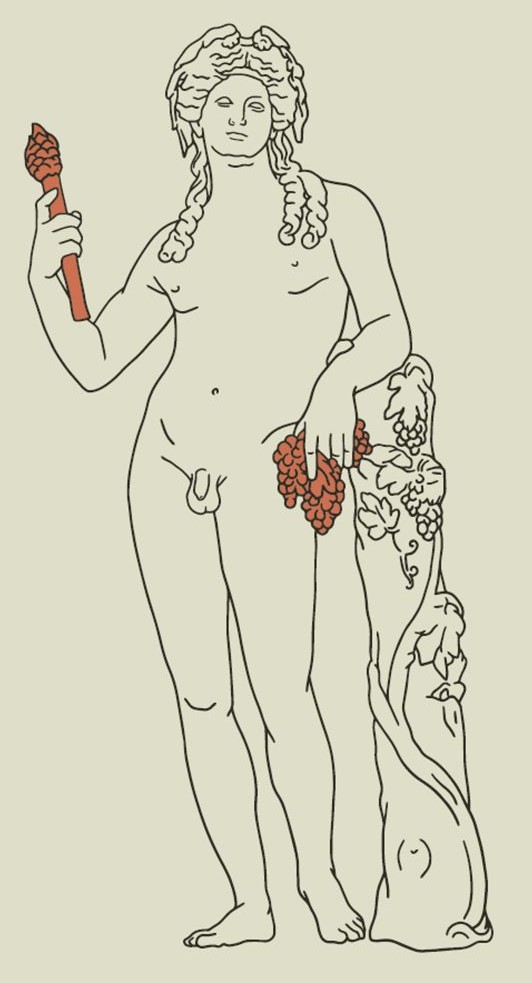
Interpretive Drawing of the Hellenistic statue of Dionysus.
Author: Gorazd Koščak
In what is today Zgornji Breg in Ptuj, in Roman times Poetovio, a luxurious private Roman villa once stood as a symbol of power and authority. Discovered in 1893, the villa was adorned with mosaics, one of which depicts animals in emblems.
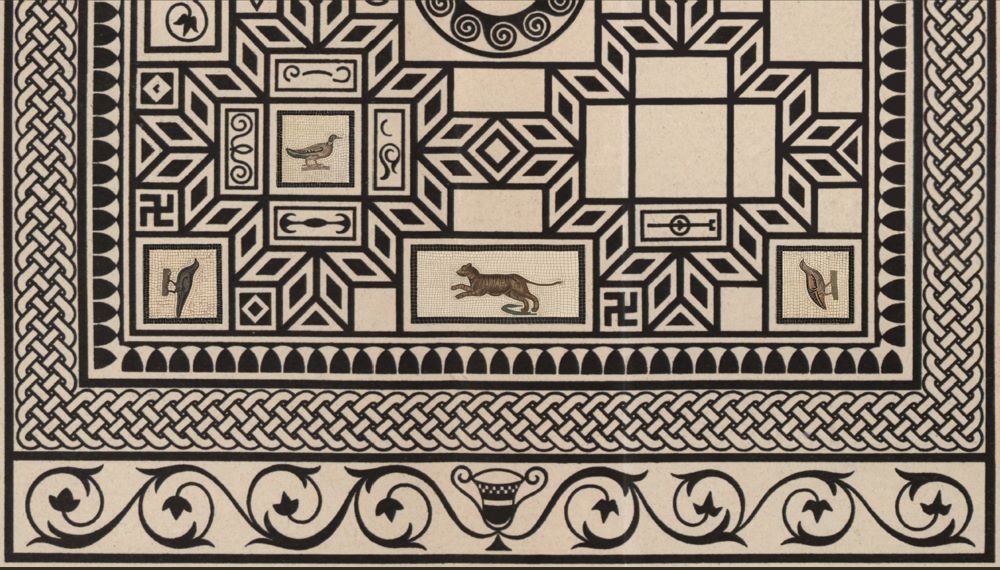
Graphic reconstruction of the mosaic with animal emblems, a fragment.
The preserved size of the mosaic is 400 x 350 cm, the entire mosaic measured around 790 x 725 cm.
The mosaic is kept in the Universalmuseum Joanneum, Graz, Austria.
The mosaic was made between the second half of the 3rd century to the middle of the 4th century. The figural ornamentation features vegetable and geometric motifs, including an ivy tendril sprouting from a chalice and coloured fields with birds and a tiger. The figural fields or emblems face different directions and guide the visitor in a circular fashion. The room most likely served as a dining or reception room.
The mosaic ornamentation is characterised by a typical Roman visual narrative. A game of meanings and allusions, which moves easily from one meaning to another, directs the viewer towards a hidden message. This is also the reason why motifs such as the chalice with the vine tendril, which are considered the most prominent attributes of Dionysus, also appear in the mosaics of early Christian churches. In both cases, the ornamentation is a call to celebrate life.
In the villa of the wealthy dominus from Poetovio, the mosaic could be understood as the owner's invitation to the visitor to honour Dionysus with a meal. In the mysteries, the cult of Dionysus included carnivals, intoxication and sensual rapture, representing the transcendence of human nature and opening the way to the divine.
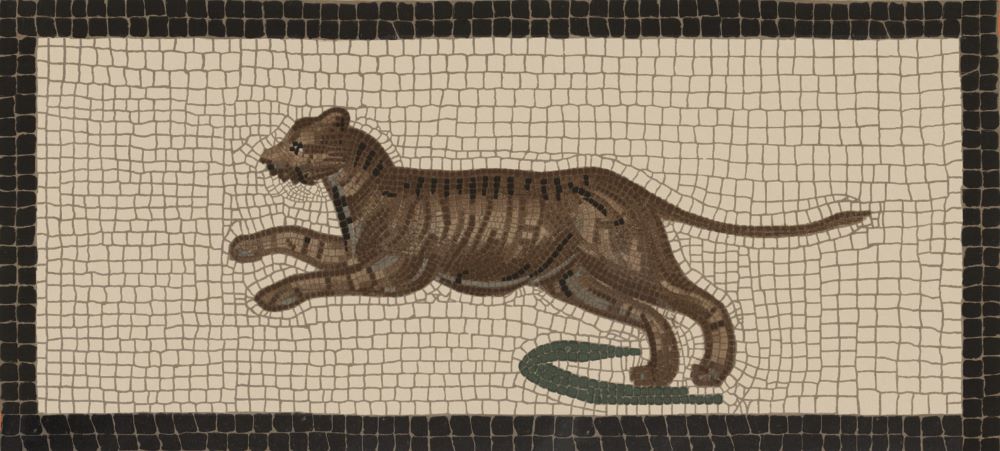
Graphic completion of the mosaic emblem depicting a leaping tiger, detail.
After the middle of the 2nd century, traditional religion was replaced by ideas of salvation. Pagan motifs took on an increasingly Christian meaning. Dionysus embodies the natural forces of fertility, the laws of life cycles and general cosmic renewal. The cult of Dionysus celebrates the eternal circle of life and its infinite transformations, where death represents the logical conclusion of life and at the same time a new beginning.
Graphic reconstruction of the mosaic and completion of the mosaic emblems: Gregor Oštir, Helena Gabrijelčič Tomc, Tanja Nuša Kočevar (University of Ljubljana, Faculty of Natural Sciences and Engineering, Department of Textiles, Graphic Arts and Design) and Aleksandra Nestorović (Ptuj - Ormož Regional Museum).
Image Gallery and Catalogue of Museum Objects
